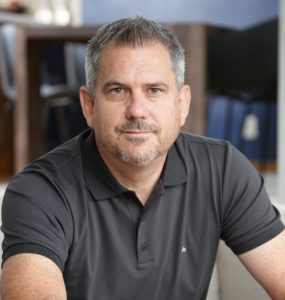When returns are poor (and sometimes even when they’re good), investors wonder if things have changed. Is this time different? Does a buy-and-hold strategy still make sense? Well, the reality is that nothing has really changed. This is just how markets work. Not surprisingly, I am advising my clients to “stay the course” (at the minimum) and to invest new money, if your circumstances allow.
True or not, such counsel can seem reflexive—not just because of the severity of the slump, but because things really might be different this time. The normal ebb and flow of prices is a part of life and thus less harrowing. But changing the rules that govern markets introduces a malicious strain of uncertainty. Will capitalism be allowed to flourish? Is the new government waging war on private enterprise? Will inflation and interest rates rise in response to deficit spending? Will there be another Great Depression?
Obviously, we cannot know. But even if we did know, would we change our approach? The doomsday predictions don’t come with an escape hatch for investors. The fundamental principles of modern finance still offer our best guidance, even if the worst comes to pass. Markets endure even in the darkest of times. Hurdles are thrown their way, and enterprise circumvents them. Political risk is no different; it’s still “priced” risk. Threats to property and liberty increase the chance that investors will not be rewarded for risking capital. This, in turn, increases the cost that companies must pay to obtain capital, which increases expected returns to a point where they spur the reticent to invest.
In recent months, capital has seemed to be on strike. Bank failures, forced selling, and changing government policy have sent investors to the sidelines, waiting for better tidings. Through the resulting meltdown, cash has been a refuge. Don’t expect this to persist. The feds are deficit-spending beyond the pale—funding rampant government expansion by borrowing and printing money. In the event of inflation, the real loss of value in a cash account is no different from a price drop in a stock portfolio—to say nothing of the opportunity cost to investors of missing big rallies.
When all is said and done, clients hire an advisor to invest—not to keep their money in a checking account. Amidst volatility, attempting to time a market reentry is even more risky and counterproductive than usual. Daily price movements are like white noise that not only make timing treacherous but confuse our ability to perceive whether we’re in an “up” market or a “down” market—even while we’re in it. We cannot declare an extended bull market from one month’s return. That would be worse than imprudent—which is exactly the point. If you can’t tell which part of the cycle you’re already in, how can you predict a future cycle, or time a turnaround to the day? The real job of the investor isn’t to predict bull and bear markets, but to be invested on days when the market surges.
Capital is the fuel that powers our economy. Money is human energy that must flow to its efficient uses. An economic axiom holds that total savings equal total investments: even money stuck in the bank doesn’t lay fallow. The banks (and other entities downstream) invest it. In this way, big reserves and small droplets alike are drawn inexorably to the sea of wealth creation. When prices fall and expected return increases, cash in a savings account increasingly risks foregoing the greater expected return of stocks and getting whipsawed by inflation. These unstoppable incentives pull capital back into action. We’re in a historically rare environment where accounting valuations exceed prices for multitudes of venerable companies. Hedge funds and debtors are forced to sell at low prices. If you don’t have to, why voluntarily join them?
As a general condition, diversified risk-taking is compensated. If you think stock returns are low going forward, make a case that stocks are less risky now than they were before all this tumult. I’m listening…. Like other forces of nature, markets are unfathomable to central planners, the media, or any individual. They adapt to the worst that we throw at them. I have no doubt that the markets will recover and that capitalism will survive this test.
Now, as part of this quarterly mailing, I have included some additional readings that I think you’ll like. First, I’ve included five questions and answers from Professors Eugene F. Fama and Kenneth R. French. They answer some very common questions that I’ve been hearing lately, so please take a moment to learn from two of the smartest economists in the world. Second, I’ve included a recent article from the Washington Post, entitled “The Radicalization of Ben Bernanke,” by Simon Johnson and James Kwak (co-founders of www.BaselineScenario.com).
Also, in order to comply with the provisions of the Gramm-Leach-Bliley Act, I am enclosing a copy of KFP’s Privacy Statement for your review. The Privacy Act requires that I deliver this to every client on an annual basis. In addition, as a Registered Investment Advisor, Keystone Financial Planning is required by state regulators to offer you a copy of Part II of Form ADV. If you would like a copy of Form ADV Part II, you may download it by going to the “Regulatory Compliance” page on KFP’s website (www.KeystoneFP.com). Please feel free to call me if you would like a copy mailed to you.
Thank you for your continued trust and confidence during this historic time. Please feel free to call or send an email if you need anything.
About Christopher Jones
Christopher Jones is the Founder and President of Sparrow Wealth Management, a fee-only financial planning and investment management firm. Before entering the investment field, Chris was a management consultant for Deloitte Monitor. He graduated summa cum laude from Brigham Young University with a B.S. in Economics and a minor in Business Management.


